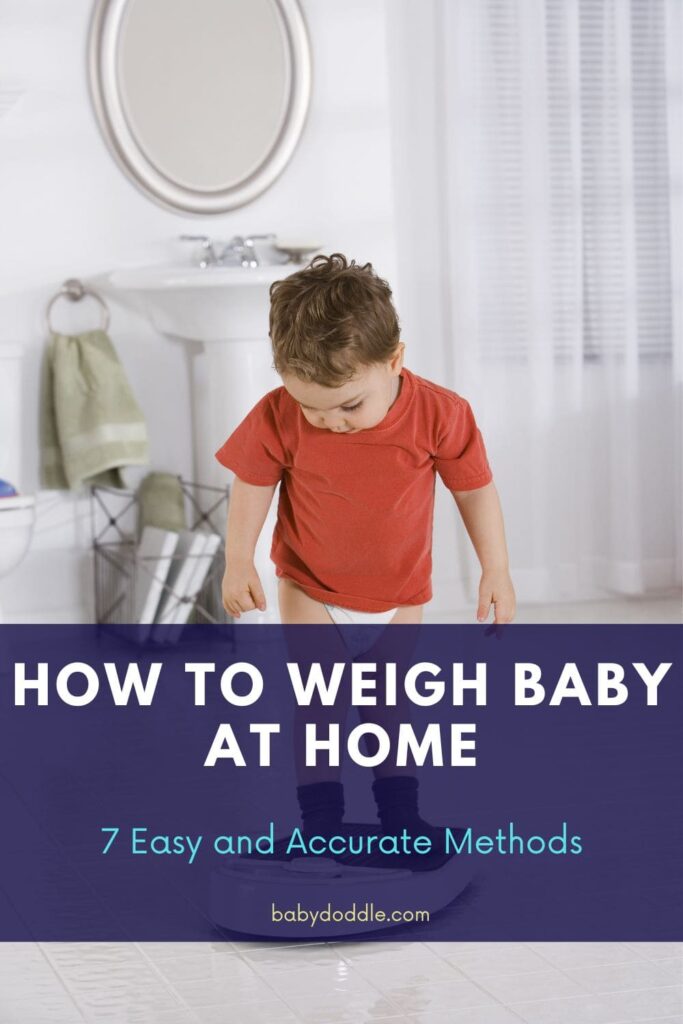Learning how to weigh baby at home is an essential skill for new parents. Getting those consistent weight measurements helps ensure your little one is growing healthy and strong in between trips to the pediatrician’s office.
In this complete guide, we’ll cover everything you need to know about tracking your baby’s weight through at-home checks. You’ll learn techniques using store-bought baby scales plus 7 DIY hacks with household items you already own. Let’s dive in!
Why Weight Your Baby at Home
Getting frequent weights is the best way to monitor your baby’s growth trajectory and make sure they stay on track meeting all developmental milestones. Watching those ounces tick steadily up over days, weeks, and months provides concrete evidence that your feeding routine is working.
Sudden drops off their percentile line on standard baby weight charts can also indicate health issues needing quick medical attention. So at-home monitoring helps you catch potential problems early between appointments.
Plus, daily weighing at home gives you hard data to analyze patterns versus relying on rough estimates of whether baby seems smaller or bigger. You’ll feel reassured seeing precise numbers documenting their progression.
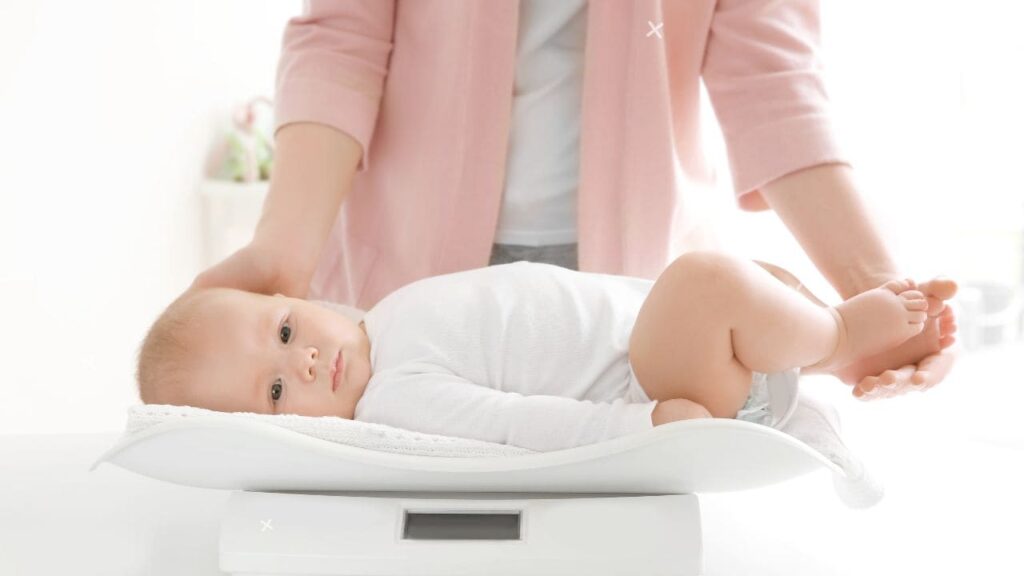
When and How Often to Weigh
Experts recommend starting regular at-home baby weight checks after the first month once feeding establishes and initial weight loss from birth levels off.
Aim to weigh 2-3 times per week, allowing at least 48 hours between sessions for the most precise tracking. Keep your process extremely consistent by using the same baby scale, weighing naked before feeding at the same time of day after baby empties their bladder.
This cadence provides an accurate view of true weight fluctuations rather than temporary ups and downs from digestive variations. Recording frequently builds a precise growth curve over time!
Baby Weight Charts
While the numbers on your scale show incremental weight gain, growth charts add essential context by plotting your baby’s exact measurements against standard developmental curves.
Look up an age-based baby weight chart and take note of key percentile lines like average, above/below average, and low weight thresholds. Mark where your baby’s weight lands at each age point.
Seeing their personalized infant weight chart visualizes if pounds are increasing proportionally and gives you benchmarks for healthy gain. Alert your pediatrician if percentile rank changes drastically up or down.
Average Baby Weight Gain Patterns
To set expectations, the average baby doubles in weight by 5 months old and triples their original pounds by their first birthday. However, don’t stress if your child’s gain doesn’t match precisely as there’s a wide range of “normal” especially in early months.
Use this general guideline:
- Birth Weight: 5 to 10 pounds
- 1 Month: Regain birth weight plus 1 to 2 pounds
- 2 Months: Double birth weight
- 4 Months: Triple birth weight
- 6 Months: 16-18 pounds
- 9 Months: 20-22 pounds
- 1 Year: 22-30 pounds
Remember, babies grow in fits and starts so some months they pack on the ounces while other weeks they seem to plateau. Focus on the overall trajectory!
| Milestone | Average Weight Range |
|---|---|
| Birth | 5 to 10 pounds |
| 1 month | 6 to 12 pounds |
| 2 months | 8 to 13 pounds |
| 4 months | 11 to 16 pounds |
| 6 months | 16 to 22 pounds |
| 1 year | 22 to 31 pounds |
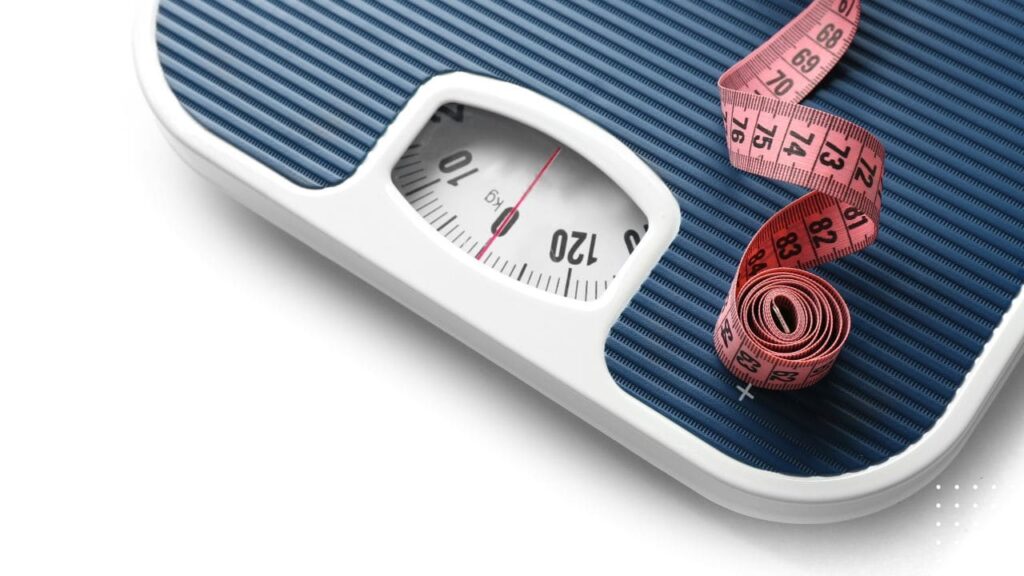
Baby Scales for At-Home Use
While the next section covers weighing infant alternatives with household items, purchasing an at-home baby scale provides the most convenient and precise measurements.
Here are top features to look for when selecting the best one:
- Easy-to-read digital display
- Highly precise sensors
- Zero/tare option to deduct containers
- Extra-large weighing platform
- Lightweight and portable
- Auto off setting to conserve battery
We love the intelligently designed Greater Goods Smart Baby Scale which syncs weights directly to their app’s digital log. Highly recommend!
Next, let’s review 7 ingenious methods for DIY infant weighing using items you already have at home. From hacking your bathroom scale to calculating liquid volumes, you’ll be amazed what everyday products deliver precise baby weights!
Picking the Perfect Spot for Your Baby Scale
Choosing the right location to set up your baby weighing station takes some thought. You’ll want a space that’s safe, convenient, and makes the process effortless as possible.
Safety First
- Pick a sturdy, flat surface away from table edges
- Ensure no trip hazards like cords or rugs nearby
- Have a non-slip mat or towel for grip
Convenience Matters
- Choose a central spot you pass through often
- Near diaper station or most used nursing area works well
- Not too tucked away or difficult to access
Effortless Is Essential
- Place at a height easy to lay baby down gently
- Avoid needing to kneel, bend, or reach far
- Have supplies like diapers, swaddles handy
- Accommodate any specialty items used for positioning
Take some time to observe your daily routines and think through convenience. With a thoughtfully placed scale setup, regular weigh-ins will feel smooth and stress-free!
Method 1: Flat Baby Scale
Transform any flatter digital scale like a food prep surface into an improvised baby weighing station. Simply place a large bowl, laundry basket, or even an open cardboard box on top to create a secure makeshift cradle.
Gently lower your wiggly newborn inside their swaddle or naked directly onto the smooth surface. Be sure to steady the container walls with rolled up towels so baby feels snug and secure during their impromptu adventures in amateur weightlifting!
Pro Tip: For extra precision, first weigh the empty vessel itself, then place baby inside and subtract off the poundage of just the bowl/box used.
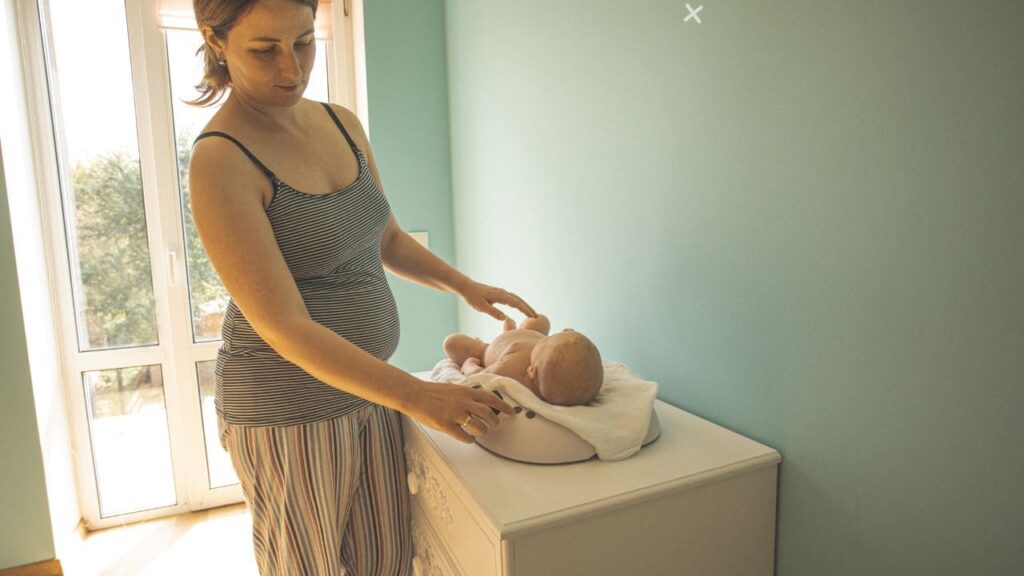
Method 2: Standing Baby Scale
Dig that old dusty bathroom scale out of storage and convert it into precision baby weighing machinery!
Simply step onto the scales alone to record your base weight. Next, hold your bundle of joy cradled against your chest, step on again and take the new combined “adult plus infant” reading. Quick subtraction calculates your little one’s pounds precisely.
I prefer gently bouncing my son while holding in my arms which keeps this wiggle worm still and relaxed. But if baby resists being embraced while weighing, first place them in a front wrap carrier, record baseline solo weight, then again strapped against your chest. Same simple math applies!
Pro Tip: If display only shows whole pounds not decimals, average 3 attempts at solo hold weight and 3 of the carries-baby weights. Then compare totals!
Method 3: Weigh While Nursing
Curious exactly how much liquid gold your baby takes in per feeding? Use this clever hack to find out!
Place a towel on your scale as you sit to nurse. Zero out the number then latch baby as usual. When finished, stand gently – cradling them on your chest – to record total gained pounds. That increase represents the exact quantity consumed straight from the source!
Fascinating info to track and watch steadily rise session to session. But use caution when stepping on/off any scale with baby in arms.
Method 4: Weigh While Holding
Sometimes after a long feeding, you just want to keep cuddling those delicious baby rolls or calm a fussy infant with close skin-to-skin contact.
In that case, grab a partner and use the same principles as the bathroom scale method without breaking the precious embrace!
Have your helper record your solo hold weight first as baseline. Next, they’ll take a measurement holding baby’s combined poundage snuggled against your chest. A swift subtraction calculates your little one’s current heft and preserves the heartwarming magic a minute longer!
Method 5: Before and After Breastfeeding
If the nursing weight technique sounds overly complicated, here’s a simplified shortcut revealing the same valuable ounces-consumed intel.
First, place baby in a dry diaper and record their “before” weight on any scale. Then breastfeed until showing signs of fullness.
Immediately weigh again “after” feeding before too much liquid remains in their tummy. Compare totals and the difference equals their haul!
No memorizing steps or math skills required to discover exactly how much milk was ingested. Couldn’t be easier!
Pro Tip: Ensure baby empties bladder fully beforehand so new urine volume doesn’t throw off your milk calculations. Gently massage their tummy while bending legs towards chest if you suspect more might leak out!
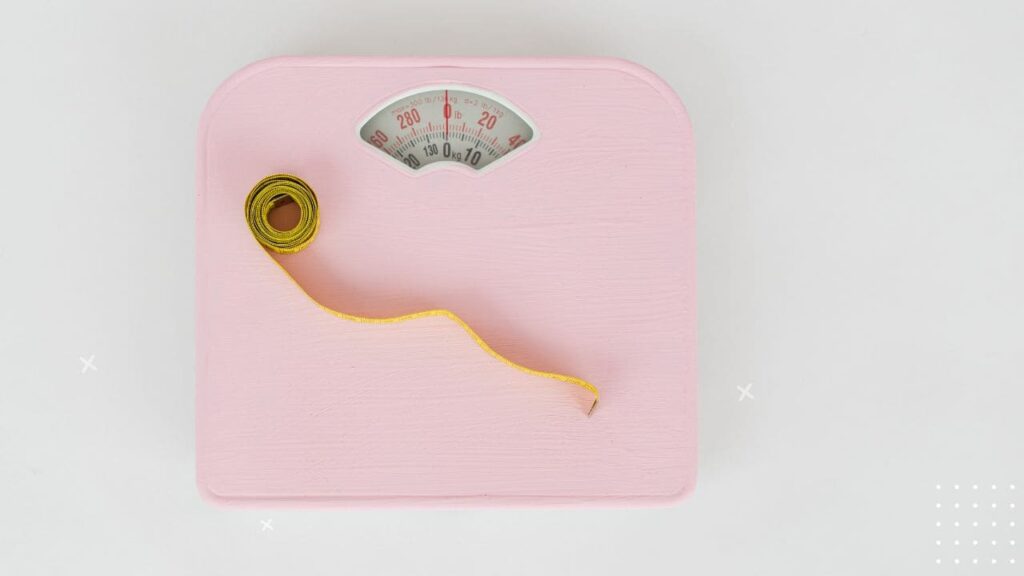
Method 6: Kitchen Food Scales
Take those bicep curls from endless baby bouncing sessions to the next level!
Rather than holding your infant directly, place them gently inside a sizable makeshift cradle like a basket, empty box, or (for tiny newborns) even a large mixing bowl.
Next, lift the vessel securely in both hands and step onto your kitchen food scale. Zero out the appliance first, then stand still as the display settles on their current poundage. Carefully step back down supporting container and baby safely.
We suggest choosing a digital scale measuring in small increments for precision. This affordable food scale is our workhorse for multiple daily weigh-ins!
Method 7: Convert Breastmilk Volume
If you supplement breastfeeding with occasional bottles, tracking exact liquid ounces consumed is valuable intel. But what if no scale is available to weigh formula? No worries – use this cheat sheet to convert volume to weight instead!
Breastmilk Weights
- 1 ounce (30 ml) = 30 grams (.96 ounces)
- 2 ounces (60 ml) = 60 grams (1.92 ounces)
- 3 ounces (90 ml) = 90 grams (2.88 ounces)
- 4 ounces (120 ml) = 120 grams (3.84 ounces)
| Volume (liquid ounces) | Weight (grams) | Weight (ounces on scale) |
|---|---|---|
| 1 ounce | 30 grams | 0.96 ounces |
| 2 ounces | 60 grams | 1.92 ounces |
| 3 ounces | 90 grams | 2.88 ounces |
| 4 ounces | 120 grams | 3.84 ounces |
| 5 ounces | 150 grams | 4.80 ounces |
| 6 ounces | 180 grams | 5.76 ounces |
For example, if baby drinks five 3-ounce bottles daily, they consume about 15 ounces or 450 grams each day. Cool to quantify their haul!
This easy reference also helps when researching average intake since articles usually list amounts in either ounces or grams. Quickly cross-reference to understand whether your baby’s consumption lands within normal range.
| Method | Accuracy Rating |
|---|---|
| Baby scale | High |
| Bathroom scale holding baby | High |
| Nursing/bottle feeding scale jump | Medium |
| Before & after feeding difference | Medium |
| Kitchen food scale with container | Medium |
| Standing scale holding swaddle | Low |
| Volume conversion math | Low |
Interpreting Daily Fluctuations
As complex organisms (not calculators!), weight tends to vary hour to hour and day to day based on factors like digestion, hydration, activity level, etc.
Try not to overanalyze normal short-term fluctuations. Instead focus on overall measurement trends from week to week. As long as your pediatrician confirms weight moving appropriately overall, those interim ups and downs are no biggie!
Red Flags Requiring Doctor Visit
While minor blips often self-correct, watch for these scenarios where notable weight changes warrant prompt medical check-ins:
- Loses pounds rapidly
- Goes 1-2 weeks without gaining ounces
- Refuses feedings for multiple days
- Has difficulty keeping milk or formula down
- Shows other illness signs like fewer wet diapersAverage Baby Weight
In most cases, remedies are simple like adjusting nutrition plans. But early intervention for serious issues makes a huge long-term difference in baby’s health!
Developmental Delays: Early Signs from Weight Tracking
While hitting exact growth chart percentiles perfectly isn’t expected, consistent and significant drops in weight trajectory can indicate possible developmental delays needing early medical intervention. Some conditions first flagged by unusual infant weight tracking patterns include:
Failure to Thrive (FTT)
- When weight drops major percentiles on charts
- Often tied to difficulty properly absorbing nutrition
- May be only initial or main symptom
Low Weight-for-Length
- When weight doesn’t match average for length
- Signals inability to properly metabolize/store calories
Genetic Disorders
- Some health conditions intrinsically impact development
- Weight as well as length tracking can help diagnose
Establishing any physical or cognitive issues early is key. An experienced pediatrician can spot these red flags with proper weight data and connect families to support services right away. So beyond basic health tracking, consistently weighing baby at home serves as an important developmental screening tool!
And there you have it…everything needed to begin monitoring your baby’s weight gain plus 7 clever ideas for DIY infant weight checks between pediatrician visits!
You’ll be amazed to look back on photos as the months pass seeing your tiny newborn sprout rapidly right before your eyes. Weighing at home helps document their incredible development while ensuring health from day one!
FAQ – How to Weigh Baby at Home
What type of scale is best for weighing my newborn at home?
The best baby scale is a flat, open surface digital scale designed specifically for infants. Look for one with a removable soft mat, smooth rounded corners, handy storage tray, and large LED display showing weights down to small decimals in either pounds or kilograms. Some additional “smart” features to consider are Bluetooth connectivity to track weights in apps, long battery life, and gentle vibration. Popular affordable options are the Babysense Baby Scale or Miku Smart Baby Scale.
My baby moves NON-STOP. What’s the best way to get an accurate home weight?
Wiggly infants make precision challenging! First, choose your scale location carefully ensuring limited distractions and temperature neither too hot nor cold so baby is relaxed. Swaddle them snugly or strip down to a clean diaper removing excess clothing bulk. Finally, involve a second pair of hands – have one person gently hold or contain limbs while the other swiftly captures the weight measurement the moment baby lies still. Rushing a bit prevents the chance for them to get antsy. With practice, you’ll be pros at distraction techniques and rapid scale balancing maneuvers!
How do I know if my baby’s weight gain seems okay?
While every baby grows on their own curve, you can use growth chart percentile lines and average gain ranges as helpful benchmarks. As long as your pediatrician confirms weights are increasing appropriately and proportionally to baby’s length, you can generally relax knowing their development appears on target. Only if your infant drops major percentile lines on the chart, fails to gain more ounces after 2 weeks consistently, or shows other symptoms should you worry. Remember that doubling birth weight around 5 months and tripling it by their first birthday are common overall.
Can I use my adult bath scale to weigh my baby? Is that safe?
Technically you can gently place your baby into a plastic laundry basket or other rigid container, then lift the entire vessel onto your adult bath scale’s platform to capture their weight indirectly. However, keep in mind that the large scale surfaces plus display height pose major tip over hazards. It’s safer to kneel on the floor when placing and lifting your makeshift basket cradle to prevent dangerous falls. Also have a partner spotting to assist. While possible in a pinch, investing in an actual infant scale with short sides, soft mat, and angled easy-to-read display remains the smarter, less stressful choice!
What household items can be used in place of baby scales to weigh an infant?
In absence of an actual baby scale, some clever DIY alternatives include:
- Rigid basket or box set atop kitchen food scale
- Weigh adult holding baby, then alone to find difference
- Place infant in sling, carrier or wrap then weigh yourself
- Weigh on bath scale immediately before/after feeding
- Calculate volume drank x conversion multiplier
Just keep safety first using items with sturdy construction that fully contain baby. Support head/neck carefully when lifting and moving them onto any makeshift platform. And remember that while creative home solutions work decently, investing in an inexpensive but proper infant scale is wise for frequent/longterm use!
